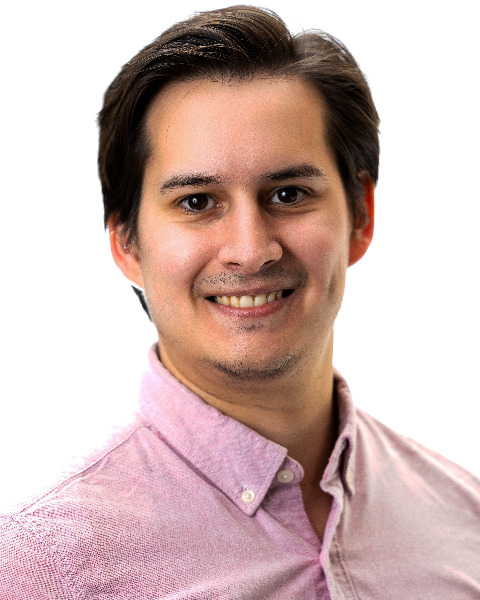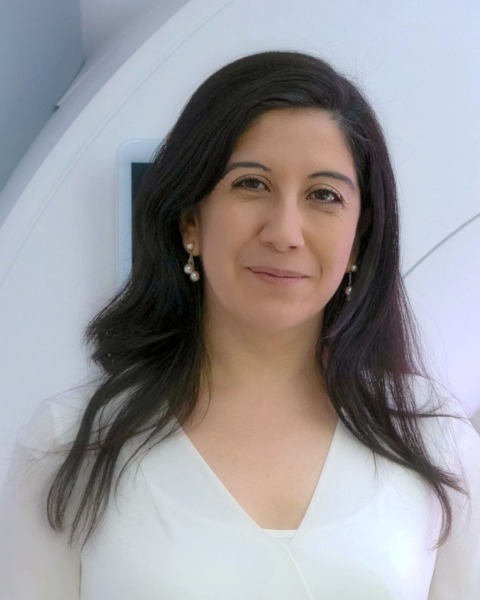Rapid Fire Abstracts
Free-running Cardiac MRF for Simultaneous T1, T2 Mapping and Cine Imaging at 0.55 T (RF_TH_280)
- DP
Diego Pedraza, BSc
PhD Student
Pontificia Universidad Católica de Chile, Chile - DP
Diego Pedraza, BSc
PhD Student
Pontificia Universidad Católica de Chile, Chile 
Carlos A. Castillo Passi, PhD
Research Engineer
Pontificia Universidad Catolica de Chile, Chile- KK
Karl P. Kunze, PhD
Senior Cardiac MR Scientist
Siemens Healthineers, United Kingdom 
Rene Michael M Botnar, PhD
Director and Professor
Institute for Biological and Medical Engineering
UC Chile, Chile
Claudia Prieto, PhD
Professor and Director for Research and Innovation
School of Engineering, Pontificia Universidad Católica de Chile, Chile
Presenting Author(s)
Primary Author(s)
Co-Author(s)
Cine MRI is the gold standard for left ventricular functional assessment and myocardial motion characterization1,2. Quantitative parametric maps are widely used for disease characterization, such as fibrosis, myocardial infarction or edema3,4. Traditionally, cine imaging, T1 and T2 mapping are performed in separate acquisitions5-8, leading to long scan times, patient fatigue and misregistration between the images. Free-running cardiac MRF has been proposed to enable simultaneous T1, T2 mapping and cine at 1.5T and 3T9,10. Lower-fields systems have been introduced to allow more affordable cardiac MRI and benefit of lower B0 inhomogeneity. In this study, we aim to assess the feasibility of a bSSFP free-running cardiac MRF approach for simultaneous T1/T2 mapping and cine imaging at 0.55T.
Methods:
The proposed sequence was evaluated over a standardized T1/T2 phantom11 and 2 healthy volunteers (26±1 yo, 2 male). The sequence follows a continuous breath-hold set of radial tiny golden angle (23°) bSSFP readouts. The radiofrequency (RF) pulse pattern consists of a series of sinusoidal lobes (100 RFs each) with flip-angles between 10° and [30°, 50°, 70°]12. An adiabatic Inversion Recovery (IR) pulse was applied at the start of the sequence and four T2 preparation (T2prep) pulses were applied every 3 lobes12. The acquired data is retrospectively assigned to different cardiac phases using a simultaneously acquired ECG signal, where each RR interval was divided into P= 8 cardiac bins using a soft-gating approach13. Each binned MRF time-series is reconstructed via low-rank inversion (LRI)14 and HDPROST regularization15 to obtain the cardiac phase images. One dictionary was simulated with Bloch equations, for all reconstructions, in KomaMRI16.
Acquisition parameters include FOV=256x256 mm², voxel size=2x2x10 mm3, TE/TR=3.9/7.8 ms, IR TI=20 ms, T2prep duration=55 ms, radial spokes=1500, for a total scan time of ~13 s. Spin-echo sequences were employed to obtain both T1 and T2 phantom reference maps. All experiments were performed on a clinical 0.55T MRI scanner (MAGNETOM Free.Max, Siemens Healthineers AG, Erlangen), using a 12-channel chest array and a 9-channel embedded posterior receiver coil. ECG-synchronization was performed using an external monitoring system (MAGLIFE serenity, SCHILLER).
Results:
Phantom results are shown in Fig. 1, T1 and T2 maps (averaged over all cardiac phases) are compared against IR-SE reference maps. Correlation results (R² >0.99 for T1 and R² >0.96 for T2) show good agreement with the reference, except for large (out of cardiac range) T2 values ( >150 ms). T1 and T2 maps across all cardiac phases for 2 healthy volunteers are shown in Fig. 2. Average septal myocardial values across all phases for both healthy volunteers are, for T1 and T2, 757±32 ms and 58±5 ms, respectively. An overestimation can be observed for T1 values and good agreement for T2 values with respect to reference literature values (T1ref=701±24 ms, T2ref=58±6 ms)17. Fig. 3 shows the corresponding free-running cardiac MRF cine images for both healthy volunteers.
Conclusion:
The proposed free-running cardiac MRF framework allows for simultaneous quantification of co-registered T1 and T2 maps and cardiac cine imaging. Good accuracy and precision were observed in phantom, T1 overestimation and good agreement for T2 was observed in-vivo. Further extensions, that include non-rigid motion correction and increase the cardiac temporal resolution (number of cardiac phases), will be investigated.

